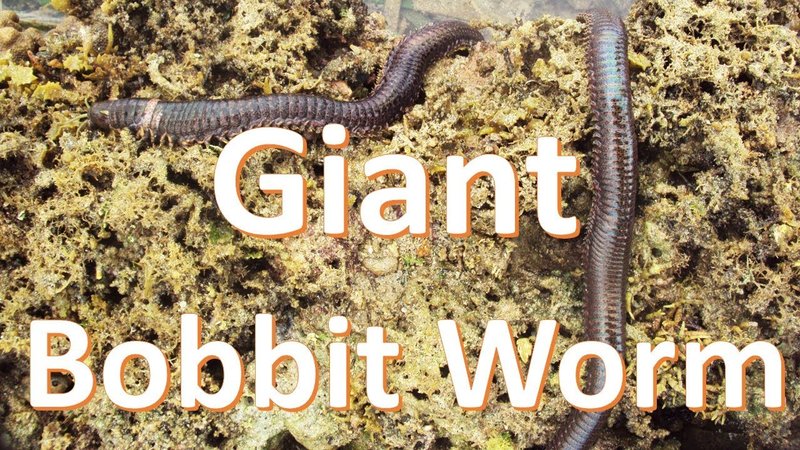
Imagine you find a hidden treasure in your live rock, but it’s guarded by an unwelcome guest. That’s the Bobbit worm—the pirate of your reef! Knowing how to outsmart this clever creature can make a world of difference to the health of your aquarium. Whether you’re a seasoned aquarist or just starting, I’ll break down your options for safely trapping and removing these colorful, elongated intruders from your beloved setup. So, let’s roll up our sleeves and dive in!
What Are Bobbit Worms?
Before we dive into trapping techniques, let’s first understand what we’re dealing with. Bobbit worms, scientifically known as *Eunice aphroditois*, are marine polychaete worms that can grow up to 10 feet long, although many stay around 3 to 4 feet. They blend in with the rock and sand, often hiding their bodies and only exposing their impressive jaws when hunting.
Now, here’s the thing: Bobbit worms aren’t just random hitchhikers they’re often introduced to aquariums through *live rock*. That pretty rock in your aquarium might be providing a perfect home for these worms. They usually come out at night to hunt, using their sharp jaws to strike unsuspecting prey. So, if you’ve ever noticed shrimp or small fish disappearing without a trace, it might be time to investigate.
While they have some beautiful colors, their presence can turn problematic. If you’ve discovered one in your tank, removing them is key to maintaining a healthy environment for your other marine buddies.
Signs That You Have Bobbit Worms
Getting rid of a Bobbit worm starts with realizing it’s there in the first place. Here are some common signs to look out for:
- Unexplained Losses: Are your fish or shrimp mysteriously disappearing? Bobbit worms can be sneaky predators.
- Visible Worms: You might catch a glimpse of them at night when they’re out hunting. They often peek out from crevices.
- Feeding Marks: If you find damage to fish or crustacean bodies (bite marks, etc.), that can indicate Bobbit worm activity.
If you have any of these signs, it’s time to act.
Preparing for the Trap
Before we start, let’s gather the right tools for trapping these little troublemakers. You’ll want to create a safe and effective environment for both you and the worm. Here’s what you’ll need:
- Fish Net: A small net can help capture any worm that comes out.
- Clear Container: An empty bottle or jar can house the worm once you’ve caught it.
- Bait: Something irresistible like shrimp or fish can attract the worm. It’s like offering a tempting treat.
This preparation is crucial. It’s kind of like prepping for a fishing trip—you don’t want to go out with a bare hook!
How to Trap Bobbit Worms
Now that you have your tools ready, let’s talk about how to setup your trap. Here’s a simple step-by-step process to follow:
1. Bait the Trap: Place the bait, like a tiny piece of shrimp, in a clear container. Make sure it’s something the Bobbit worm can smell.
2. Position the Container: Place the container near the area where you suspect the worm is hiding. The goal is to catch the worm’s interest and lure it out.
3. Check Regularly: After a few hours, check the container for any signs of movement. You might need to come back later or even set it up for overnight.
4. Seal the Deal: Once the worm is inside, carefully cover the container to prevent it from escaping. You don’t want it to pull a fast one on you!
5. Remove Safely: Finally, relocate the worm far away from your aquarium. A local body of water or a dedicated marine life area is best.
Alternative Methods for Removal
If trapping doesn’t work or if you’re feeling a tad more adventurous, there are a couple of alternative methods. Here are a few you might consider:
1. Manual Removal
If you’re up for some hands-on action, you can try to manually remove the worm. Although it sounds a bit scary, here’s how to do it safely:
– Turn off all lights in the aquarium to encourage the worm to come out.
– Use a long tool, like forceps, to grasp the worm gently and pull it out slowly. You want to avoid breaking it, as pieces left behind can regenerate.
2. Chemical Treatments
While I usually shy away from chemicals, there are products designed to target unwanted marine worms. If opting for this route:
– Research a reputable product. Make sure it’s safe for your other fish and invertebrates.
– Follow the instructions carefully, as overusing can lead to unwanted side effects.
Preventing Bobbit Worms in the Future
Once you’ve successfully removed the worm, it’s vital to think about prevention. Here are some steps to keep your tank Bobbit worm-free:
- Inspect Live Rock: Always inspect live rock before introducing it to your tank. Look for any signs of worms or other pests.
- Regular Maintenance: Keep your aquarium clean and regularly check on the inhabitants. The healthier your tank, the less likely it is to attract unwelcome guests.
- Fish Selection: Choose fish that are known to eat worms, like certain wrasses. They can help keep your tank clear of Bobbit worm populations.
With the right practices, you can create a safe home for your aquatic buddies.
Bobbit worms may seem like a daunting challenge, but with the right knowledge and tools, you can effectively trap and remove them from your live rock. Understanding their habits, preparing your trap, and knowing how to act are all critical steps in keeping your aquarium healthy and thriving.
So, next time you spot a mysterious wriggler in your tank, don’t stress! With a little patience and the right approach, you can tackle even the trickiest bobbits. Happy aquascaping!

